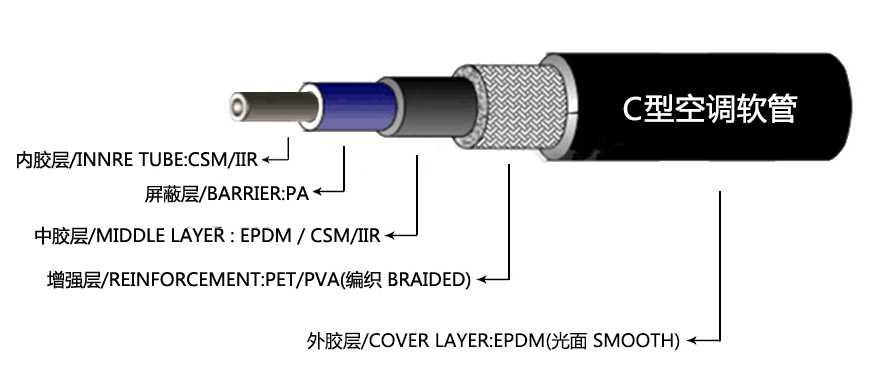Methods to Adjust and Secure Your Power Steering Hose Effectively for Better Performance
How to Tighten Power Steering Hose A Step-by-Step Guide
Power steering is an essential component of modern vehicles, providing drivers with the ease and control necessary for maneuvering. A well-functioning power steering system relies heavily on a network of hoses that deliver fluid from the pump to the steering gear. Over time, these hoses can become loose or degraded, leading to leaks and a decrease in performance. If you're experiencing issues with your power steering, tightening the hoses may resolve the problem before more extensive repairs are needed. In this guide, we'll walk you through the process of tightening power steering hoses safely and effectively.
Tools and Materials Needed
Before you begin, gather the following tools and materials
1. Wrench set (adjustable or specific sizes) 2. Hose clamps (if necessary) 3. Power steering fluid 4. Towels or rags 5. Gloves and safety glasses
Steps to Tighten Power Steering Hose
1. Safety First
Start by ensuring your vehicle is parked on a flat surface with the engine off. Engage the parking brake and allow the engine to cool down if it has been running. Wear gloves and safety glasses to protect yourself from any unexpected leaks.
2. Locate the Power Steering Hoses
Open the hood and locate the power steering reservoir. The power steering hoses typically connect the reservoir to the pump and the steering gear. Familiarize yourself with the layout, as you’ll need to access both the inlet and outlet hoses.
3. Inspect for Leaks
Before you begin tightening, check for any signs of power steering fluid leaks around the hoses and connections. Look for wet spots or puddles under the vehicle. If the hoses appear worn or if there are significant leaks, consider replacing them instead of just tightening.
how to tighten power steering hose

4. Tighten the Hose Connections
Use the appropriate size wrench to tighten the hose clamps that secure the hoses to their fittings. Be cautious not to overtighten, as this can damage the hose or fitting. A snug but not excessive tightness is usually sufficient. If you notice any damaged clamps, replace them with new ones to ensure a secure connection.
5. Check for Additional Hoses
In some cases, there may be multiple hoses or connections involved in the power steering system. Follow the hoses and inspect all points where they connect to the reservoir, pump, and steering gear. Tighten any additional loose connections as needed, again taking care not to overtighten.
6. Refill Power Steering Fluid
After tightening the hoses, check the power steering fluid level in the reservoir. If there has been a leak, the fluid level may be low. Refill it with the appropriate power steering fluid recommended by your vehicle's manufacturer, ensuring it reaches the correct level indicated on the reservoir.
7. Test the System
Start the engine and turn the steering wheel from side to side to allow the fluid to circulate through the system. This will also help to identify any remaining leaks. Check under the vehicle for any signs of fluid leakage around the hoses and connections you have tightened.
8. Regular Maintenance
To prevent future issues, regularly inspect your power steering system. Check for any signs of wear or leaks, and address them promptly. Keeping the hoses tight and in good condition is crucial for maintaining optimal power steering performance.
Conclusion
Tightening power steering hoses is a straightforward process that can be accomplished with minimal tools. Regular maintenance and inspections are key to ensuring your power steering system operates effectively. By following these steps, you can address minor issues before they become significant problems, keeping your vehicle's steering system responsive and safe. Remember, if you're unsure or encounter severe leaks, it’s advisable to consult a professional mechanic for further assistance.
-
Ultimate Spiral Protection for Hoses & CablesNewsJun.26,2025
-
The Ultimate Quick-Connect Solutions for Every NeedNewsJun.26,2025
-
SAE J1401 Brake Hose: Reliable Choice for Safe BrakingNewsJun.26,2025
-
Reliable J2064 A/C Hoses for Real-World Cooling NeedsNewsJun.26,2025
-
Heavy-Duty Sewer Jetting Hoses Built to LastNewsJun.26,2025
-
Fix Power Steering Tube Leaks Fast – Durable & Affordable SolutionNewsJun.26,2025

